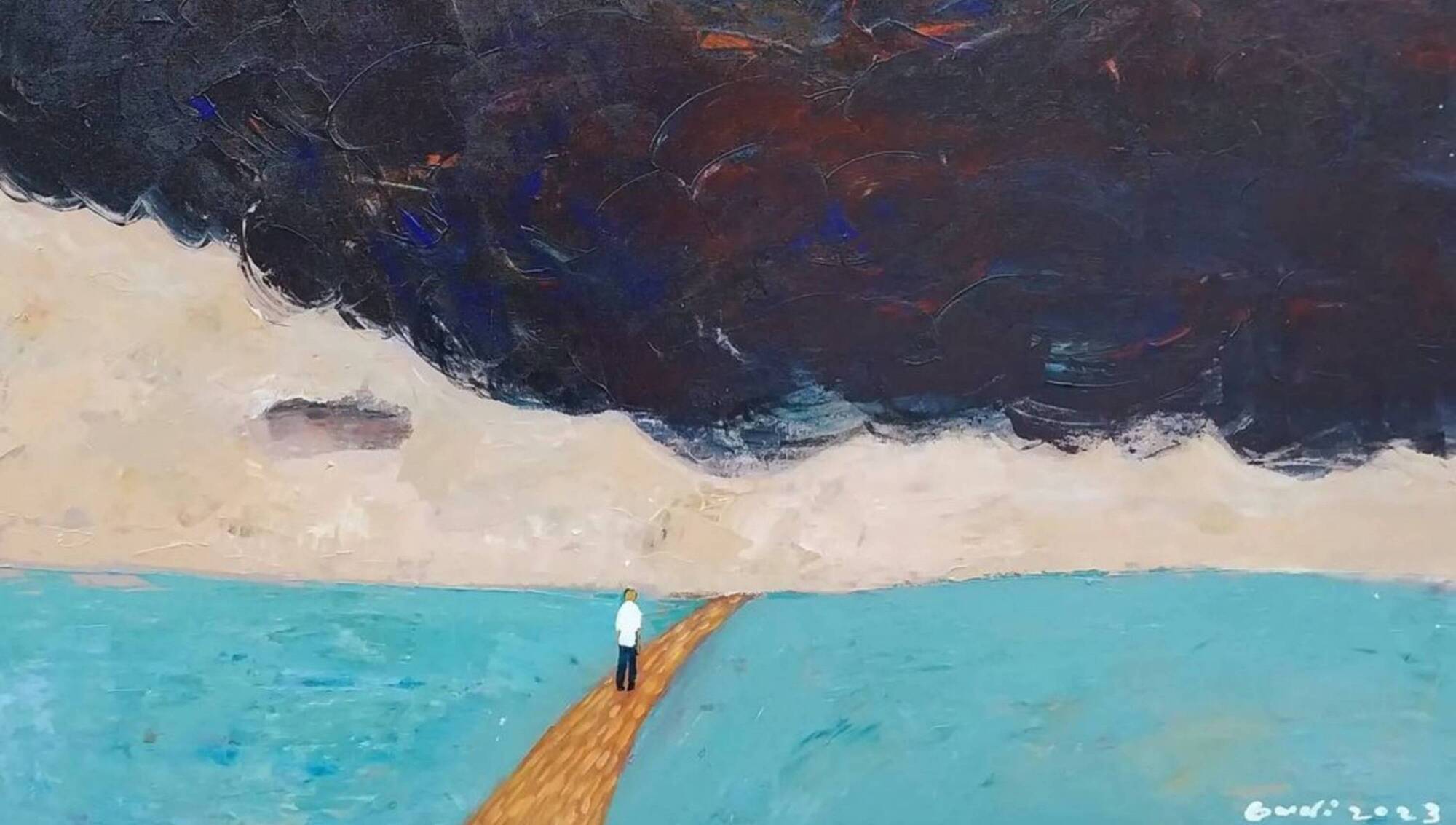From Another Island is a solo exhibition by Budi Gugi, which opened in Claremorris Gallery on February 24th and will run until March 9th.
Budi Gugi is an Indonesian painter who lives on the island of Bali. The exhibition features 20 paintings and this is the artist’s first time exhibiting outside of his home country. The title of the show refers not only to Ireland and Bali, two islands contrasting starkly in culture and climate, but also to the notion of the artist himself as an island.
Budi is a self-described loner, who spends 99% of his time in solitude. His paintings reflect this isolated existence and express the beauty of life, with an equal appreciation of both joy and sorrow. His poetic paintings bring to mind the words of William Blake:
Budi is alone not only in life but also in his practice. His work stands apart from that of his Balinese peers in both subject matter and style. The artist was trained in art school in the capital of Indonesia where he acquired very fine image-making skills. An art degree in Indonesia takes five years to complete, during which artists focus almost entirely on technique and the refinement of skills in painting, drawing, sculpture and craft.
A typical Indonesian art education differs enormously from the training offered in art institutions in Ireland, the UK and indeed the rest of the Western world. Art colleges in Indonesia, in line with other Southeast Asian countries, such as Vietnam, Thailand and Laos, adopt a more traditional pedagogical approach, one that is heavily influenced by the government’s cultural policy, with syllabi often based on Indonesian cultural values. These are described as “playing an active role in the creation of pure art that produces Indonesian identity based on these values”.
The artist’s alma mater, for example, offers a Traditional Weapons and Keris Programme as part of its fine art degree. Many of Gugi’s contemporaries work in this vein, producing art that espouses the values set forth by the Indonesian Education Ministry. In this way, artists are encouraged to work in service of national identity and to keep alive ancient and traditional crafts, for which there is a strong tourist demand.
Taken in this context, we see how Budi’s work is a radical departure from prevailing Indonesian trends.
Gallery director, Rosemarie Noone, says: “Budi is an outlier amongst his peers, making work that is deeply personal. His command of colour and proficiency as a painter are instantly recognisable but his compositions have a strong ‘outsider’ aesthetic.”
Budi says: “Being an artist is like taking a small and lonely path where we can see beautiful scenery, we can see mountains, river, jungle, bird, sky, everything but in the end, the only one we can talk to is ourselves.”
The gallery opening hours are 1 to 6pm, Wednesday to Saturday, or by appointment.
